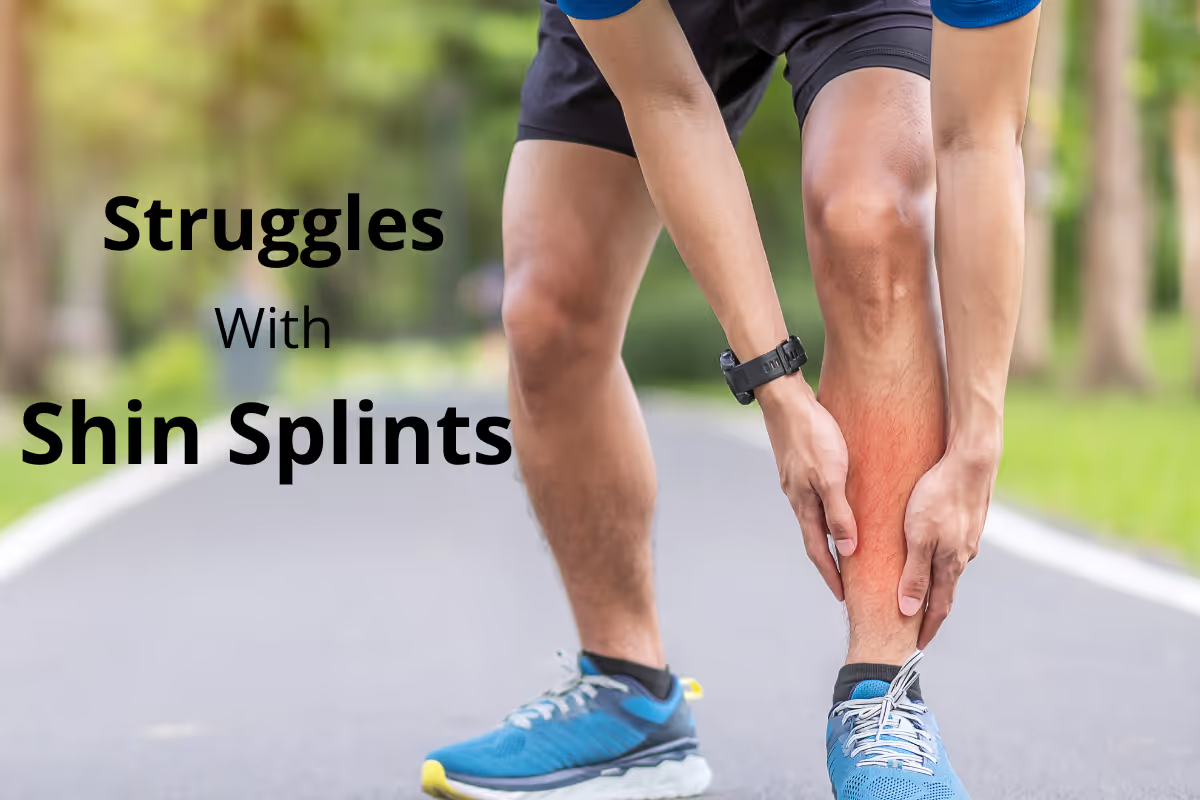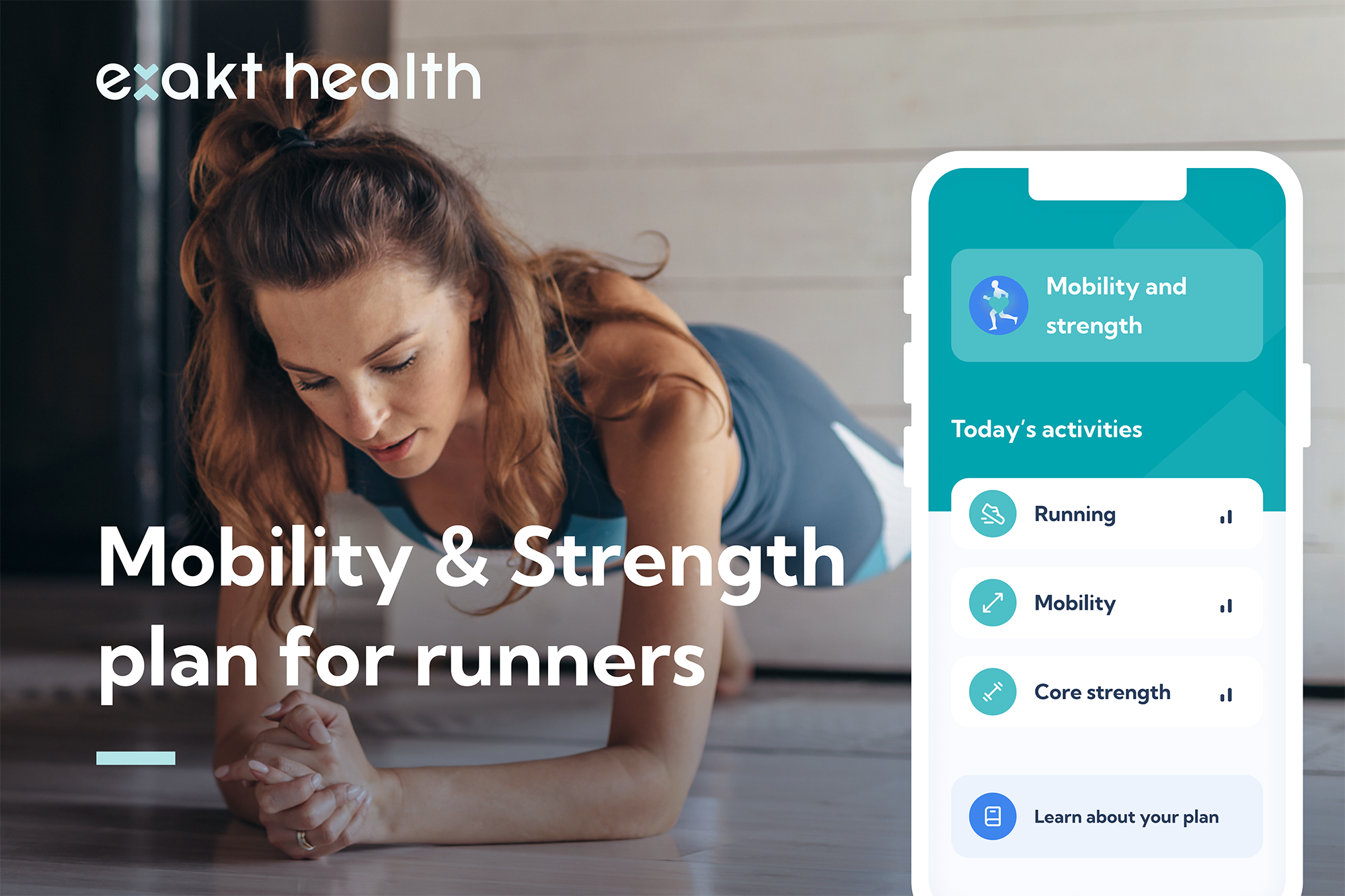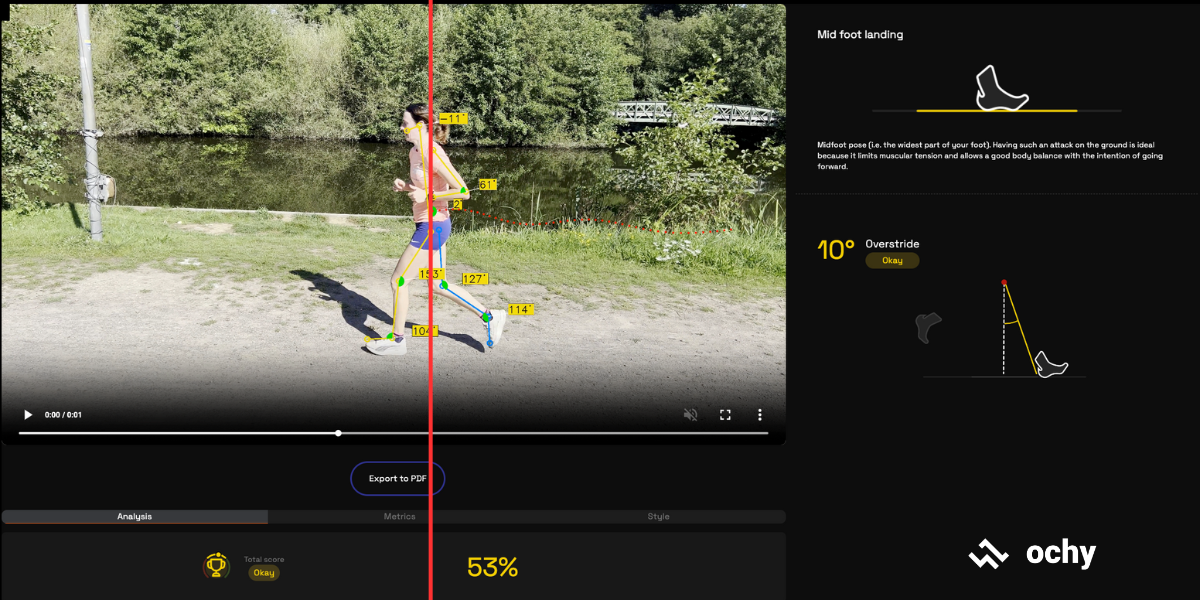In this article, we share our top tips for reducing shin pain while running and preventing those pesky shin splints from returning once you've recovered!

How poor running form can cause shin splints
There are two main types of shin splints people get, and each has a different cause:
- Medial (inner) shin splints — the pain is located over the inner part of the shin bone
- Anterior (front) shin splints — the pain is located over the front of the shin bone
Medial shin splints develop when the inner part of the shin bone and the muscles that attach to it are overworked. Typical running form errors reported in the research that may lead to this include:
- Over-pronation (excessive rolling in of the foot) — causes include weak foot, ankle, and gluteal muscles or very flexible foot ligaments
- Excessive medial (inward) rotation of the leg — often due to weak gluteal muscles
- Overstriding (placing your foot far out in front of you) — leads to increased force through the leg and can exacerbate overpronation and inward rotation of the leg
- Narrow gait (running on a tightrope) — causes your legs to move in (adduct) and increases the strain on the inner shin
One of the leading causes of anterior shin splints is overworking the front shin muscles while you run. Overstriding is often the culprit here — it causes you to pull your toes up higher (dorsiflexion) before planting your heel in front of you, which works the front shin muscles harder.
You can use the Ochy app to assess your running form and see what factors may apply to you.
It's important to get your shin pain diagnosed by a medical professional to ensure your diagnosis is correct and you don't have a more serious injury, e.g., a stress fracture.

How to fix your running form for shin splints
1. Make sure your foundation is strong
Add one or two strength training sessions into your training week. Take a holistic approach and include exercises that strengthen your ankles, knees, hips, and core.
Not sure where to start? Take a look at the Strength and Mobility plan in the Exakt Health app. The app tailors the workouts to your current training level and suggests the best training frequency in relation to your running schedule. Save up to 40% on 3 and 6-month subscriptions with Discount Code: OCHY

2. Focus on control
If your body is used to moving in a certain way (e.g., legs turning in when you run), simply strengthening the muscles that control those areas may not be enough. You have to teach yourself a new "normal" movement pattern.
Time-saving tip — You don't have to add specific exercises (like balancing) to develop good movement patterns. You can keep your workouts short by simply focusing on good form during your regular strength training — ensuring your knees stay aligned when you squat or don't roll your ankle in when doing single leg work.
3. Practice good running form
The research shows that good strength and control achieved through exercises do not always automatically lead to better running form.
You usually have to unlearn the old bad habits and teach yourself new ones. When you first try to change your running form, it will likely feel strange and require a lot of effort. So, it is best to aim for small improvements rather than perfection.
Not sure what your running form looks like? You can easily assess your form using the Ochy app.

- If you overstride, try landing with your foot slightly more under or closer to your body rather than far out in front of you.
- If your knees turn in excessively, try to reduce how much they swing in. The idea is not to try and keep them fully straight. No one can run like that! You just want to reduce how much they turn in slightly.
- Or, try and give lighter steps (so you don't plonk your feet down). Experts agree that this can reduce overstride and increase step rate, reducing pronation and internal rotation of the leg.
- To fix a too narrow gait, try widening your stride by a few centimeters, or concentrate on not kicking yourself.
4. Slowly ease back into running after shin splints
Rehab exercises can't fully prepare your shins for the forces of running. This is why it's important to ease back into training slowly. One of the best ways to do this is by alternating short running and walking intervals.
To see how this works, look at the return-to-running program in the Shin Splints Rehab Plan of the Exakt Health app. The short run intervals also provide an excellent opportunity to practice your new running form. You can save up to 40% on 3 and 6-month subscriptions with Discount Code: OCHY

Can I run with shin splints?
It's usually best to take a break from running and let your shins recover first. Interrupting training can be frustrating, but a short rest period can lead to a quicker recovery and minimize the risk of it becoming a drawn-out injury.
However, you may not have to rest completely. Some people find that they can continue doing some running by reducing how far they run, how often they run, or improving their running form. Others find that, although they can't run, they can keep fit through cross-training.
The rehab plan in the Exakt Health app includes advice on how to use pain to safely guide your rehab and what exercise option might be best for your specific case.
References
Barton, C. J., et al. (2016). "Running retraining to treat lower limb injuries: a mixed-methods study of current evidence synthesised with expert opinion." British Journal of Sports Medicine 50(9): 513-526.
Esculier, J.-F., et al. (2018). "Is combining gait retraining or an exercise programme with education better than education alone in treating runners with patellofemoral pain? A randomised clinical trial." British Journal of Sports Medicine 52(10): 659-666.